Yaowarat Road runs like a river through the centre of Bangkok’s Chinatown, which also happens to be the largest Chinatown in the world. And, like a river, it is constantly moving. Neon signs flash day and night, steam rises from vats of food being cooked on the roadside, tiny old women move like slow tortoises from shop to shop, and tuk-tuks dart like colourful fish in and out of heavy traffic. Explore what to do in Chinatown Bangkok here, and see through the eyes of my camera in this photo diary.
*This site uses affiliate links, where I may earn a small commission at no cost to the reader.
In late May, the temperature in Bangkok was over 40ºC daily, and the entire city was bathed in a hazy golden glow. It gave a sepia tint to Chinatown’s already nostalgic atmosphere. I’m not sure if it makes sense to feel nostalgic about a place you’ve never been to and know very little about, but that’s the closest way I can describe how it was for me walking through these magical, chaotic streets. On pavements, street vendors jostle for space, squeezing pomegranate juice into plastic cups, sizzling gigantic woks of mysterious meat in sticky sauce, and attempting to shift piles of spiky green durian to punters. (Would not recommend the durian fruit, if I’m honest. It’s got a very oniony flavour to it which I just couldn’t get to grips with.)
Knotted cables connect buildings across streets, in messy tangles of bizarre high-voltage washing lines. Brightly coloured signage advertises unknown objects in characters I don’t understand. Shop windows are filled with dried seahorses and rows of plucked ducks hung by their necks. Glass counters advertise sharks’ fin and birds nests.
I’m not a vegan, but I’d imagine this is a hard spot to be one in. For me, the bizarreness of Chinatown was utterly enchanting.



What to do in Chinatown: first, a quick history lesson
The Teo Chew Chinese first arrived in this area during the 16th century, fleeing famine and persecution at home to settle on the banks of the Chao Phraya River. By 1782, Bangkok had been chosen as the capital of the Kingdom of Siam, and the Teo Chew were moved from their main settlement near the Grand Palace, to a new location outside the city walls.
Despite the swampy land and generally unfavourable circumstances, the Chinese Teo Chew were skilled merchants who continued to prosper. As Bangkok expanded, so did the new Chinatown. And although there are many parts of modern-day Bangkok that are becoming, well, ultra-modern- with gleaming tower blocks springing up left, right and centre- Chinatown has retained its cultural identity with its unique blend of Chinese and Thai culture.
Where to stay in Chinatown Bangkok
We stayed at the Shanghai Mansion on Yaowarat Road, and it was a glorious way to finish our time in Vietnam and Thailand. Partly because we’d spent many a night in homestays and budget Airbnbs, and partly because this hotel is quite simply a dream.
With opulent decor featuring dark wood and deep, richly coloured fabrics, the vibe here is inspired by 1930s Chinatown- which couldn’t be more fitting for a stay in this part of Bangkok. Combine that with the friendliest staff you could ever hope for, and the comfiest four poster bed I’ve stayed in to date, and the Shanghai Mansion was the best choice of hotel for us in Bangkok.
Check rates and availability for the Shanghai Mansion.



What to do in Chinatown Bangkok
Hunt for street art
Bangkok’s Chinatown may be old, but there’s a whole load of contemporary street art to be found amongst all the chaos. We headed to Khlong Ong Ang, a street strung with fairy lights which runs alongside the canal, although in the daytime we didn’t get the full effect of these pretty night lights. I’m desperate to go back in the evening to get the full effect.
The Talad Noi area right on the border of Chinatown is another historic neighbourhood which is now filled with incredible street art. It’s worth booking onto a walking tour of the area so that you don’t miss out on anything.
See the sights of Yaowarat Road
Not only is a walk down Yaowarat Road one of the most important things to do in Chinatown Bangkok, I’m also pretty sure it’s impossible not to. This wide road is lined with brightly coloured signs which flash neon at night, and it’s the main hub of the whole area. Weave through pavements crowded with street food vendors, past gold shops glistening with bright yellow gold, and just take in the sights and sounds of Chinatown.
Hit up Sampheng Market
My pals and I had a a particularly disastrous adventure attempting to locate Amphawa Floating Market, which is extremely far outside of Bangkok, and also which for the most part, doesn’t float. If you’re heading to Bangkok yourself, don’t skip the markets inside the city- they’re an equally wild treat for the senses.
Sampheng Market has been located in this narrow alleyway for donkeys years- some say since Chinatown sprang up here all those years ago- and it’s a really exciting place to see. The market is mostly covered, with corrugated metal providing a roof for the street between converted houses. You can find just about anything and everything for sale here, from food and spices to kitchen appliances and ornaments, and as this isn’t as much of a tourist-trap as other markets in Bangkok, the prices are generally lower than you’d expect. (Not that you’d necessarily want to go all the way to Bangkok to buy a blender and a set of net curtains.)
Eat street food
Chinatown is renowned for being a culinary wonderland, so it goes without saying that one of the best things to do is to dig in to the street food. At night time, Yaowarat Road comes even more alive than it already is, with food stalls galore- although you can find plenty during the day time as well. In fact, I enjoyed one of the most delicious meals of my entire life at a hole-in-the-wall place in a side street here.
If you want to try some new food but are unsure of where to start, you could always book yourself onto a street food tour of Chinatown.
Visit the So Heng Tai Mansion
The So Heng Tai Mansion is a beautiful time capsule of Chinatown life, in the Talad Noi area. The elegant two storey house was built almost 200 years ago by a wealthy ancestor of the current owner, and although the building is in a bit of a state of disrepair, I’d argue that that only adds to its charm. There’s no government help available for historical buildings in Thailand, so the upkeep of the house needs to be privately funded.
In order to do that, the owner has come up with a couple of fund-raising schemes: the more logical one is the newly-opened cafe on the premises, which is a great spot to relax away from the hustle and bustle of the city. Secondly, and perhaps more controversially, a pool has been built in the central courtyard, which is used as a location for giving diving lessons.
See the Golden Buddha of Wat Traimit
Wat Traimit- aka the Temple of the Golden Buddha- isn’t just an ornate temple. It’s also, as you might expect from the name, home to an incredible golden buddha, which reportedly weighs around 5.5 tonnes. For centuries the buddha was covered in a plaster casing- presumably to protect it from invaders- until it was accidentally dropped in transit, and the golden centre revealed itself like a glorious Kinder Surprise.
The buddha is housed in a white marble and gold building called Phra Maha Mandop, which is also home to the Yaowarat Chinatown Heritage Centre.
Entrance to see the Golden Buddha is 40 baht, or pay 100 baht to visit the Buddha and the Heritage Centre. Remember this is a sacred place, and dress accordingly!
(For temple dress code tips in Thailand, check out my post on the Grand Palace.)
Dine in at a Chinese restaurant
When researching what to do in Chinatown Bangkok, every guide will tell you to enjoy the street food. Duh. Street food here in Thailand gets a 10/10 in my books, however, it’s definitely worth checking out a restaurant or two for a sit down meal while you’re in Chinatown as well.
Head to Laoteng for dim sum, or to the gloriously kitsch Chop Chop Cook Shop for delicious Chinese dishes combined with a diner aesthetic.
Visit a Chinese Temple
If you’re intrigued by architecture, or religion, or people, I think it’s definitely worth visiting one of the Chinese temples in Chinatown. I’ll be honest; during my very short time in Bangkok, I only saw the exterior of these stunning temples, but it’s something I’ll definitely be doing when I return.
Thai Buddhist temples are normally gold-heavy, large complexes of buildings which feature towering stupas (the tall spire-like towers) and sweeping roofs ending in elegant upward flicks. The Chinese-built temples are smaller, more colourful buildings, with less height and a different kind of grandeur. I even passed one or two that were housed in former shops.
This is a great article on Chinese temples in Chinatown.
Say hi to the crocodiles at Wat Chakrawat
Wat Chakrawat is a beautiful temple, but there’s even more to it than meets the eye. Once upon a time, the people on the banks of the Chao Phraya River lived side by side with alligators, and one particular alligator- known as ‘Ai Bod’ or ‘One-Eye’- had a bloodthirsty appetite for humans. Eventually, the locals tracked Ai Bod down and cornered him beneath the house of a monk at Wat Chakrawat, who asked them to spare the alligator’s life.
The angry mob agreed that if the monk provided somewhere safe for Ai-bod to live, where he could no longer attack and kill, he could live. So a pond was dug on the temple grounds and Ai-bod lived out the rest of his days there. After he died, his body was stuffed and kept at the temple, and in a macabre turn of events the stuffed body of Ai-bod now watches over his live descendants, who continue to live in the temple’s pond.
Here’s the exact location of Wat Chakrawat on Google Maps.
My tip: Wallflowers Cafe
The extremely leafy, flower-filled Wallflowers Cafe is on a corner in the trendy Soi Nana area, and I’m so happy that I managed to stumble across it.
Inside the dimly lit but beautiful ground floor room, sunlight from the door highlights a glass counter filled with cakes laden with colourful flowers. (They’re also downright delicious.) Order whichever sweet treat takes your fancy along with a coffee, or arrive in the evening for cocktails on the rooftop bar.


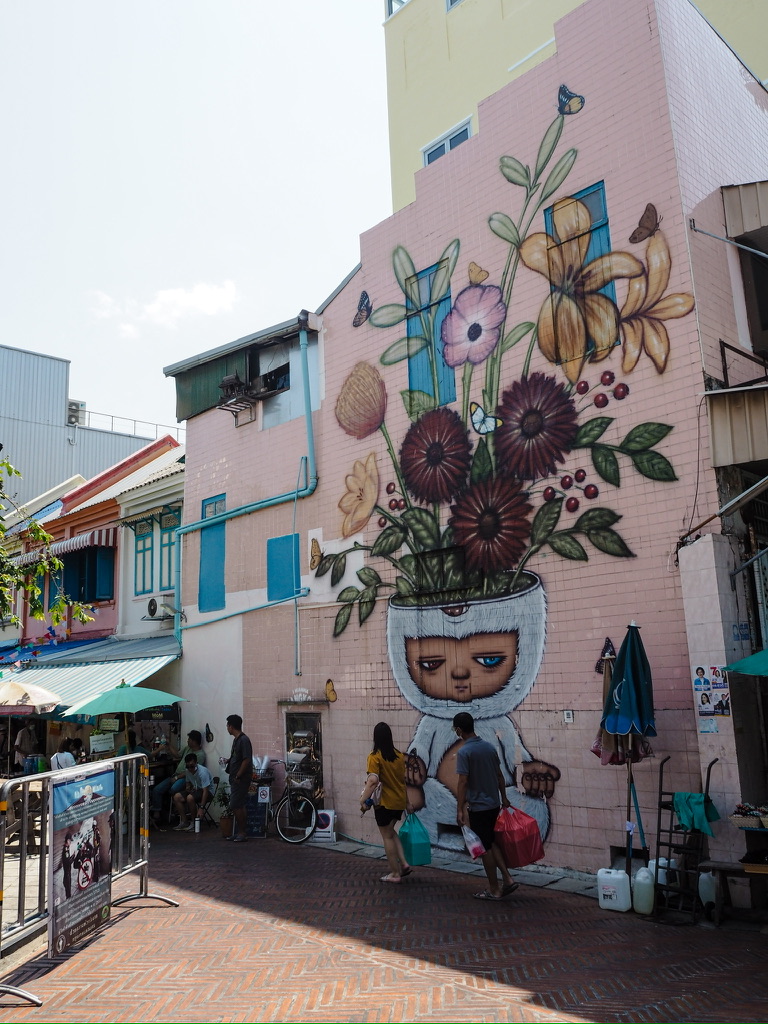










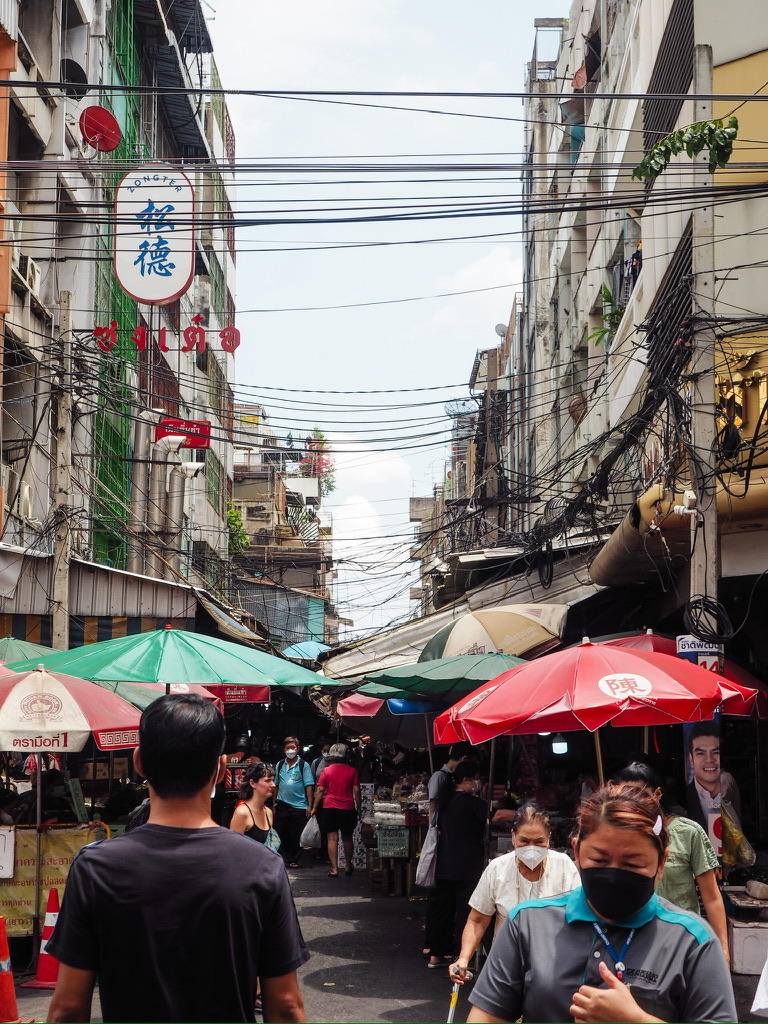





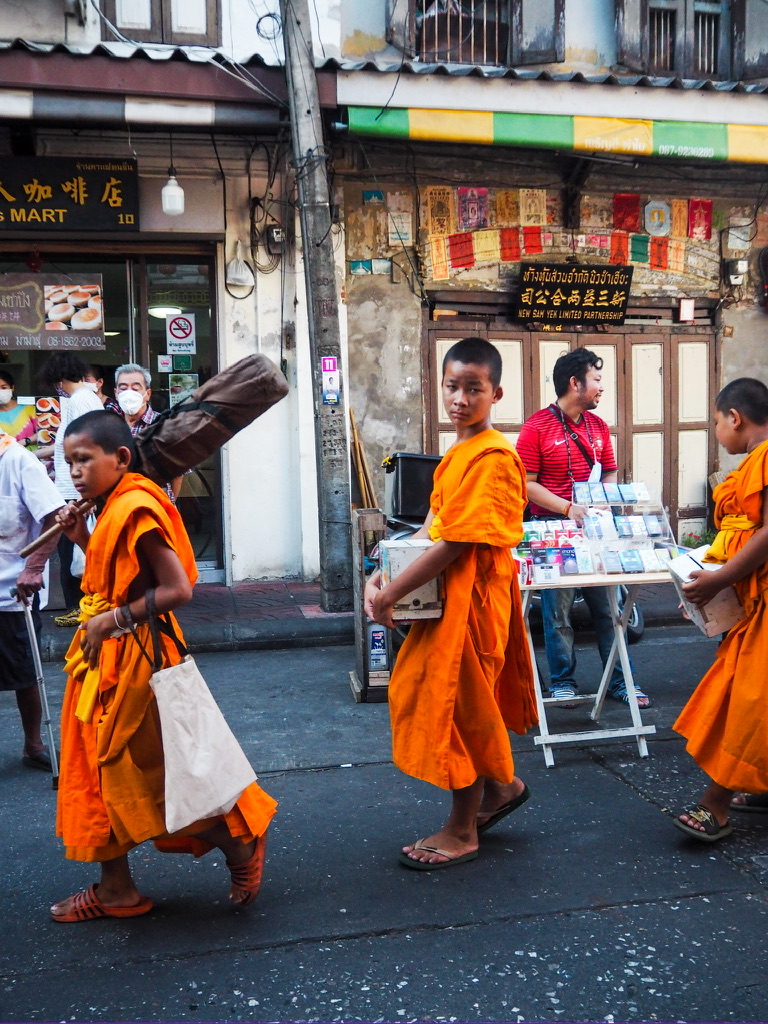




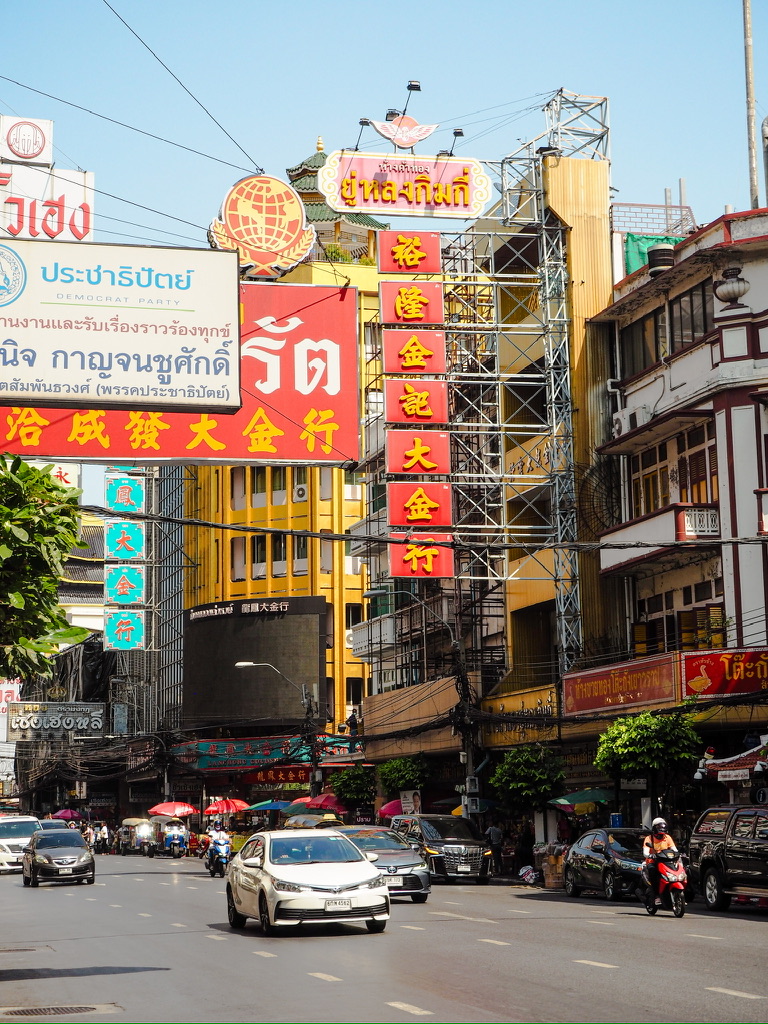
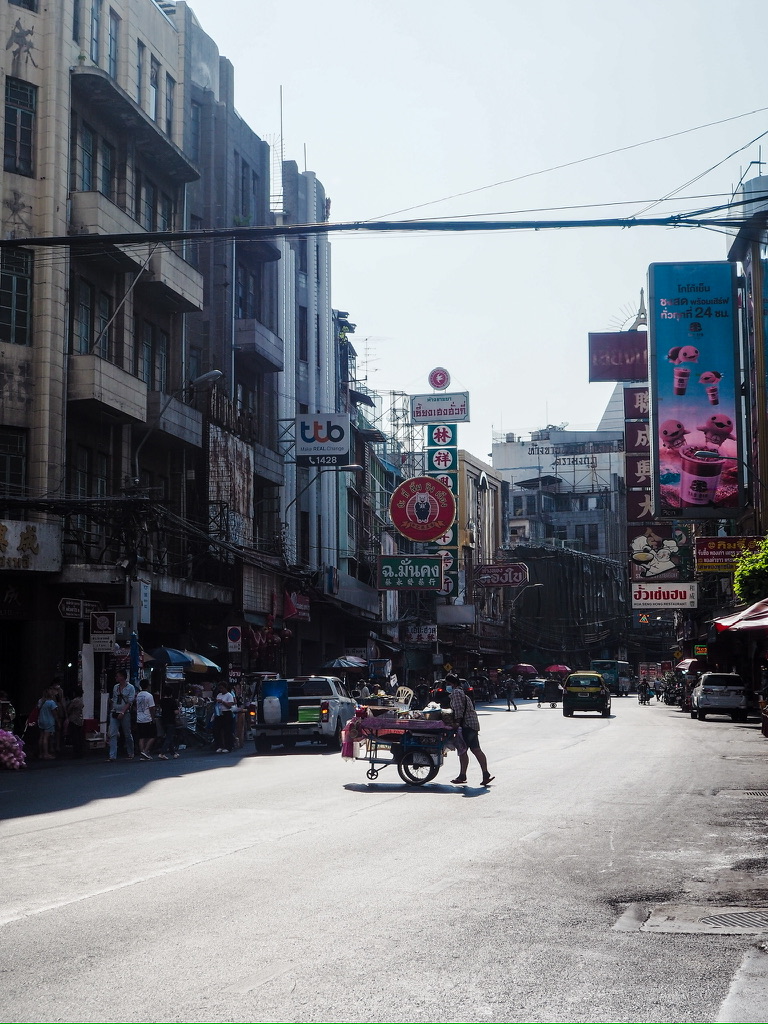

















More from Thailand:
Two Days in Bangkok: My Complete Itinerary
When is a Floating Market Not a Floating Market?

